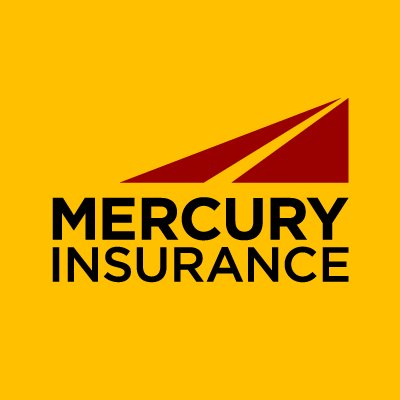There are seven main types of car insurance coverage: liability, collision, comprehensive, uninsured/underinsured motorist, personal injury protection (PIP), medical payments, and rental car coverage. Each type offers unique protection to help cover costs related to accidents, injuries, theft, or property damage.
Understanding car insurance basics can help you make smarter coverage choices. In this guide, we’ll explain each type of coverage and show how they work together to protect you and your vehicle.
Types of Car Insurance Coverage
Here are seven types of car insurance coverage to consider when building a policy.
|
Coverage Type |
What It Covers |
|
Liability |
Injuries or property damage you cause to others. Required in most states. |
|
Collision |
Damage to your own vehicle from a collision, regardless of who’s at fault. |
|
Comprehensive |
Non-collision damage like theft, fire, weather, or vandalism. |
|
Uninsured/Underinsured |
Injuries or damage caused by drivers with little or no insurance. |
|
Personal Injury Protection (PIP) |
Medical expenses, lost income, and other costs after an accident—regardless of fault. |
|
Medical Payments |
Covers medical costs for you or passengers after an accident. |
|
Rental Car Coverage |
Extends coverage to rental vehicles, often useful for travel or vehicle repairs. |
1. Liability Coverage
What is Liability Car Insurance?
Liability coverage insurance is split into two categories: bodily injury and property damage liability.
- Bodily injury liability: Helps financially protect you if you’re found legally responsible for causing bodily injury to another person.
- Property damage liability: Helps cover the damages to another person’s property — e.g., vehicles, buildings, fences, etc.
Most states require liability coverage, and you must purchase at least the minimum liability coverage set by your state. Generally, the liability coverage limits will include three amounts for bodily injury per person, bodily injury per accident, and property damage per accident. Here’s a typical example:
- Bodily injury per person ($25,000): The maximum amount an insurer will cover for a single injury
- Bodily injury per accident ($50,000): The maximum amount an insurer will cover per accident for all injuries
- Property damage per accident ($25,000): The maximum amount an insurer will cover per accident in property damage
2. Collision Coverage
What is Collision Car Coverage?
Collision protection helps cover your vehicle’s repair costs following an accident with another driver (regardless of fault) or an encounter with a fixed object — e.g., a light post, guardrail, pothole, etc.
Your insurer will assess the damages and pay for the repairs, usually up to your vehicle’s actual cash value minus your deductible.
- Actual cash value (ACV): The amount your car is worth today, accounting for depreciation.
- Deductible: The amount you pay out of pocket on an auto claim before your insurer pays for the rest. You can choose your deductible, which typically ranges from $100 to 2,000. Generally, the higher the deductible, the lower the premium — or your monthly payment for auto insurance.
3. Comprehensive Coverage
What is Comprehensive Car Insurance?
Comprehensive auto coverage helps pay to repair or replace your vehicle following a non-collision incident, such as:
- Theft
- Falling objects — e.g., tree branches
- Vandalism
- Fire
- Hail
- Floods
- Windshield damage
After you pay your deductible, your insurer can help cover the rest. This coverage is usually optional, but your lender may require it if you’re leasing a vehicle.
4. Uninsured/Underinsured Motorist Coverage
What is Uninsured/Underinsured Motorist Coverage?
Uninsured/underinsured motorist coverage is a common policy required in some states but optional in others. Depending on your state, this coverage might be separate, combined, or split into four categories:
- Uninsured motorist bodily injury: Helps pay medical expenses for you and your passenger if an uninsured driver hits your vehicle.
- Uninsured motorist property damage: Helps cover damage to your vehicle if you’re involved in an accident with an uninsured driver.
- Underinsured motorist bodily injury: Helps cover medical bills to you and your passengers if you’re hit by a driver with insurance but not enough coverage to pay for the injuries they caused.
- Underinsured motorist property damage: Helps cover your vehicle’s repair costs if you’re hit by a driver who has insurance but not enough coverage to pay for the damages they caused.
What if you’re in a hit-and-run? Uninsured motorist coverage may cover injuries or damages if a driver hits your vehicle and flees the scene. However, in some states, uninsured motorist property damage may not cover hit-and-runs, so you would likely need collision coverage to help pay for those damages. These states generally exclude hit-and-run damages under uninsured motorist property damage:
- California
- Georgia
- Illinois
- Michigan
- Texas
- Virginia
5. Personal Injury Protection (PIP) Coverage
What is Personal Injury Protection?
Personal injury protection insurance helps pay for your medical expenses following an accident, regardless of who’s at fault. It can also cover other costs incurred due to your injuries — e.g., lost income, childcare costs, senior care expenses, etc. Some states require PIP, while others have it as optional coverage or don’t offer it at all.States Where PIP Insurance Is RequiredAs of 2025, the following 12 states require drivers to carry PIP insurance
- Delaware
- Florida
- Hawaii
- Kansas
- Massachusetts
- Michigan
- Minnesota
- New Jersey
- New York
- North Dakota
- Oregon
- Utah
States Where PIP Insurance Is OptionalIn addition to the states where PIP is mandatory, several states offer PIP coverage as optional:
- Arkansas
- Kentucky
- Maryland
- South Dakota
- Texas
- Virginia
- Washington
- District of Columbia
6. Medical Payments Coverage
What Are Medical Payments on Auto Insurance?
If you, your passengers, or your family members sustain injuries in a car accident, medical payments insurance may help pay for costs associated with the injuries — e.g., hospital visits, X-rays, surgeries, etc.
While there are similarities between medical payments coverage and PIP, the key difference between the two coverages is that PIP covers additional costs — such as lost income or child care expenses — while medical payments coverage doesn’t.
“If you’re not sure whether you need both PIP and medical payments coverage, don’t stress. That’s exactly what an agent is here for. They’ll help you avoid overlap and build a policy that makes sense for your situation,” says Justin Yoshizawa, Director, Product Management State, for Mercury Insurance.
7. Rental Car Coverage
What is Rental Car Coverage?
Rental car coverage covers you when you rent a vehicle from a rental car company. During the rental process, an associate will decide whether you want to add insurance to the rental or waive it. Your auto insurance’s liability, collision, and comprehensive coverage typically extend to rental cars. The credit card you use to reserve and pay for the rental may also offer rental car coverage benefits. However, purchasing this coverage through the rental company can be a good idea, especially if:
- You don’t want to file a rental car claim through your insurance, which would affect your premium.
- Your credit card doesn’t offer rental car coverage benefits.
Tips for Choosing the Right Coverage
When it comes to choosing the right coverage, there’s no one-size-fits-all approach. Picking an auto insurance policy that suits your lifestyle and budget depends largely on your location, your vehicle, and how you drive your car. Here are four tips to help you choose the right level of coverage:
Tip 1: Assess your state’s minimum requirements
Every state sets its own rules for the minimum required car insurance. Make sure you meet these legal requirements, but consider purchasing additional coverage for extra protection.
Tip 2: Consider your car’s value and age
If you drive a newer or high-value vehicle, comprehensive and collision coverage can help protect your investment. For older cars, you may decide it’s more cost-effective to carry less coverage.
Tip 3: Think about how much you drive
The more you drive, the higher your risk of being involved in an accident. Daily commuters and frequent road-trippers may benefit from broader coverage options like PIP or uninsured motorist coverage.
Tip 4: Work with a trusted insurance agent
The best way to determine how much car insurance you need is by talking to an agent. They can walk you through your options and tailor a policy based on your needs, budget, and driving habits.
At Mercury Insurance, we sell cheap car insurance through independent agents who provide excellent advice and can tailor an auto insurance policy to meet your needs. You could also save even more when you take advantage of Mercury Insurance discounts, including bundling policies, safe driver discounts, good student savings, and more.

Frequently Asked Questions
What type of car insurance do I need?
The type of car insurance you need depends on your state’s legal requirements, your vehicle’s value, and your personal financial situation. At a minimum, most states require liability insurance, but you may also want to consider collision, comprehensive, uninsured/underinsured motorist, and medical coverage for broader protection.
Do I need collision and comprehensive coverage?
You may need collision and comprehensive coverage if your car is newer, financed, or leased—or if you want help paying for repairs after accidents, theft, or weather damage. These coverages are optional in most states, but are usually required by lenders if you’re financing a vehicle. If your car is older and has a lower market value, you might choose to skip them to save on premiums.


